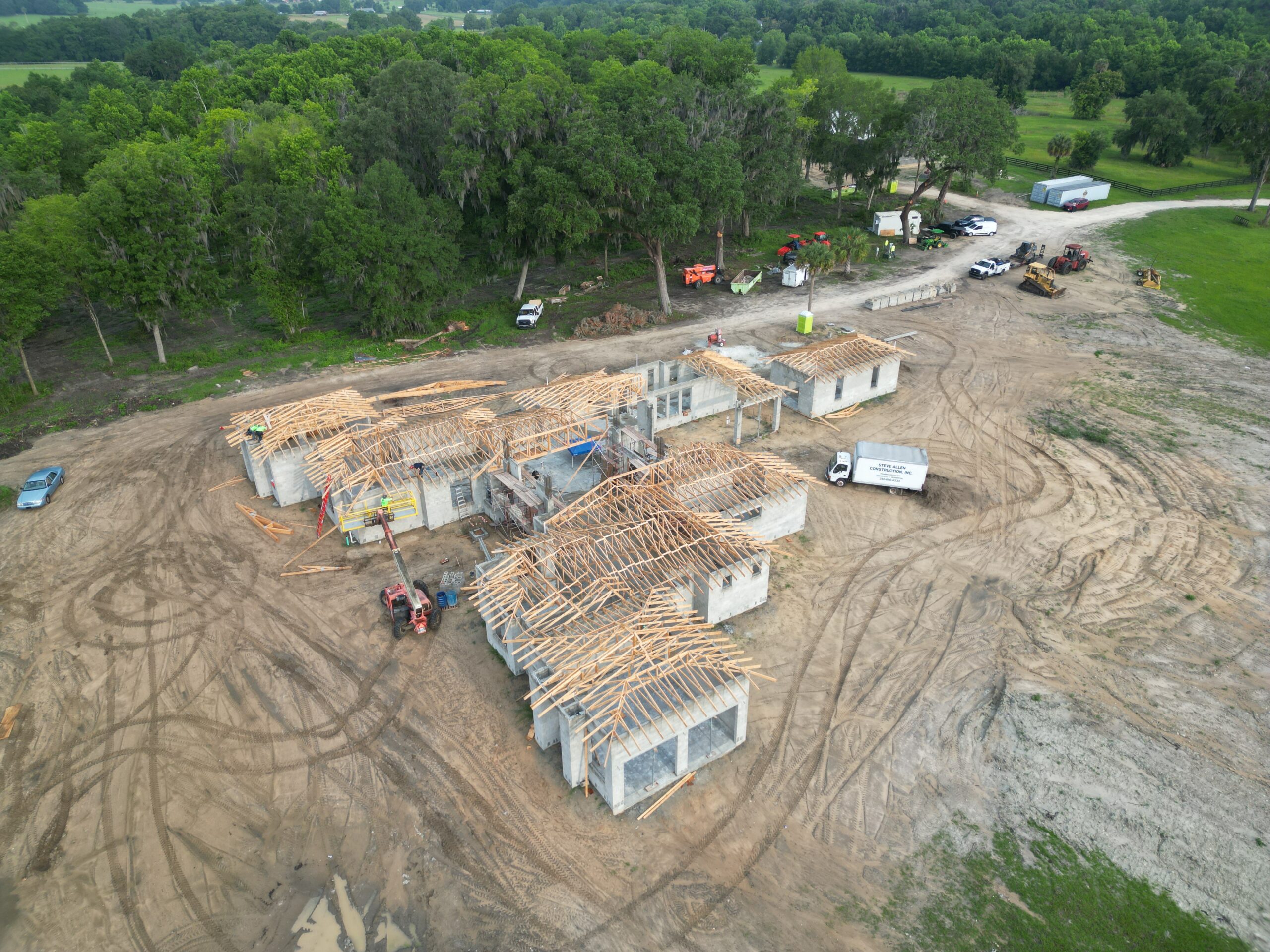Trusses are the backbone of a roof’s structure, providing support and shape to the overall design. They distribute weight evenly across the walls of the house, ensuring stability and durability. For large homes with detailed roof designs, trusses are essential for maintaining the integrity of the structure. Flying trusses, or lifting and placing them onto the house using a crane, is a critical step that ensures the roof’s framework is correctly installed.
The Process of Flying Trusses
- Preparation and Planning:
- Before the trusses are flown onto the house, a detailed plan is created. This includes the sequence in which the trusses will be placed, ensuring that each piece fits perfectly with the next.
- The site is prepared, and safety measures are put in place. This includes securing the area and ensuring that all personnel are aware of the procedures and potential hazards.
- Using a Crane to Fly Trusses:
- A crane is used to lift the trusses from the ground and place them onto the house. The crane operator works in close coordination with the construction crew to ensure precise placement.
- Each truss is lifted and positioned according to the pre-determined plan. This requires skilled operators and crew members to guide the trusses into place and secure them.
- Securing the Trusses:
- Once a truss is in place, it is temporarily braced to hold it steady. This is repeated for each truss until the entire roof framework is in place.
- After all trusses are positioned, they are permanently secured using nails, bolts, and other fasteners. This step is crucial for ensuring the stability and safety of the roof.
What Comes After
- Inspection and Adjustments:
- After the trusses are secured, a thorough inspection is conducted to ensure that each truss is correctly positioned and fastened. Any necessary adjustments are made to maintain the integrity of the roof structure.
- Sheathing Installation:
- The next step involves installing roof sheathing, which provides a base for the roofing material. Sheathing also adds an extra layer of stability and protection to the roof.
- Roofing Material Application:
- Once the sheathing is in place, the final roofing materials, such as shingles, tiles, or metal panels, are installed. This completes the roof and provides the home with protection against the elements.
- Final Inspection:
- A final inspection ensures that the roof is constructed according to plan and meets all safety and building code requirements. This step is crucial for ensuring the longevity and durability of the roof.
Conclusion
Flying trusses onto a large home with a detailed roof is a complex and critical process that requires careful planning, skilled operators, and precise execution. This step is essential for ensuring the stability and integrity of the roof, which in turn contributes to the overall strength and durability of the home. At Tallen Builders, we take pride in our meticulous approach to every aspect of construction, ensuring that each project we undertake is completed to the highest standards of quality and excellence.
By understanding the importance and process of flying trusses, homeowners can appreciate the expertise and dedication that goes into building a safe and beautiful home. If you’re planning a construction project and want to ensure every detail is handled with care, contact us today to discuss how we can bring your vision to life.

